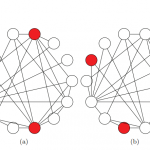 The social habits of a wide range of creatures have been tracked in recent years using RFID wearable sensors. Researchers from Kobe University have tracked everything from humans to ants as part of the SocioPatterns project. The data from the project has been made public to try and aid further research, but making sense of this large dataset can be challenging.
The social habits of a wide range of creatures have been tracked in recent years using RFID wearable sensors. Researchers from Kobe University have tracked everything from humans to ants as part of the SocioPatterns project. The data from the project has been made public to try and aid further research, but making sense of this large dataset can be challenging.
In a newly published paper, the researchers describe a new method they’ve identified to help identify the most important connections between nodes in a social network. The researchers believe their method allows us to better identify meaningful events as opposed to chance events, and from this establish significant relationships between people.
What’s more, the team believe that their method is just as effective at finding valuable connections even among ‘shy’ people who aren’t as active in the network as their more enthusiastic peers. The team tested their model on the social networks that existed in a school in Lyon, France, and found that it accurately mimics the actual networks that existed in the classes.
“It is quite natural that contacts within each class explain most of the significant ties, but this phenomenon is not well captured by the existing methods that were originally developed for static networks,” the researchers explain.
The researchers believe the robustness of their model allows it to be applied in a wide range of different social networks, and especially those that are formed by bilateral temporal interactions. For instance, the team tested the model on the banking sector, and showed that the interbank market saw a big increase in the number of ‘significant connections’ around the time of the financial crisis in 2008. It’s a robustness that the team believe render if valuable in a wide range of contexts.
“This method is expected to capture the evolution of various complex networks from interbank markets to a flock of cows. If it’s implemented on a face-to-face network of students, for instance, one may be able to detect signs of bullying and/or ostracism,” they explain.